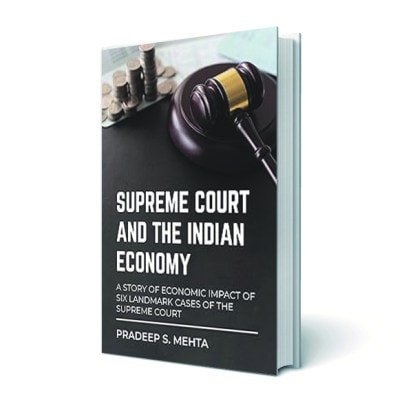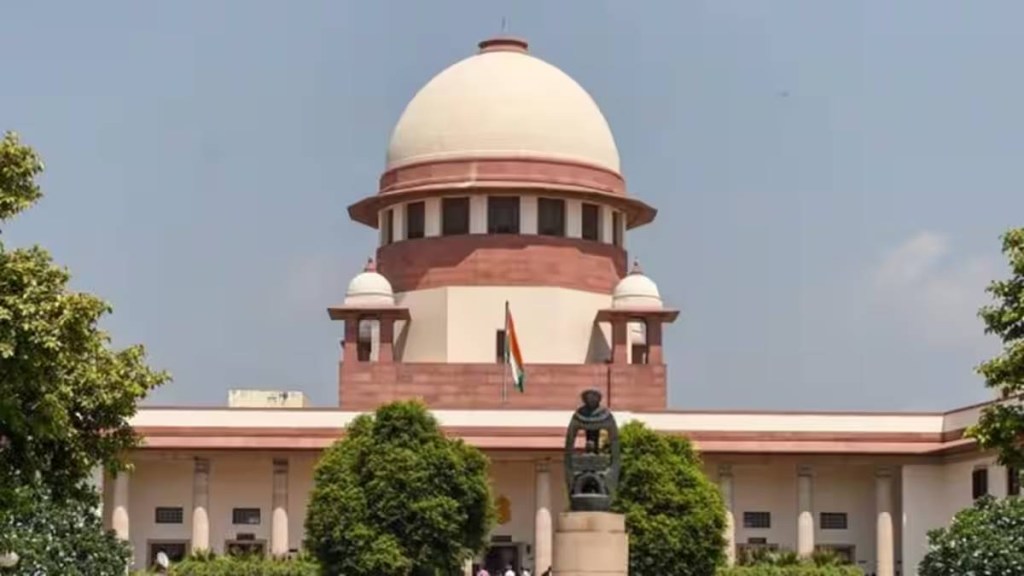By Amitabh Kant
Supreme Court and the Indian Economy: A Story of Economic Impact of Six Landmark Cases of the Supreme Court
Pradeep S Mehta
Academic Foundation
Pp 392, Rs 895
India is poised to become a $35-trillion economy in the next few decades, and the economic growth of the country will continue to accelerate. For India to be Viksit Bharat by 2047, sustained high levels of investment would be crucial, and the Government of India is doing transformational work to ensure this transpires. Reforms since 2014 have led to unprecedented growth and innovative and transformative initiatives such as the production linked incentive (PLI) schemes, have led to growth and jobs. With over 5 crore pending cases in Indian courts, access to justice and dependability of judgments is important for India to continue its high growth trajectory. This is also a time when India has become a beacon for growth and development, and the G20 Presidency has been an opportunity to showcase India’s potential and accomplishments on a massive international scale.
Economic growth is a key catalyst to India becoming a global superpower, and one which the Government of India has identified as a high priority goal, especially in terms of creating jobs. It is through a progressive and inclusive development regime that India will lead the way for its residents to prosper and thrive. India is fortunate to have an extremely independent and forward thinking judiciary, one that on several occasions since independence has provided clarity and direction to the country. However, there are areas in which the courts may be intervening that require further deliberation, external expertise, an assessment framework, and a macro perspective.
Currently, there is uncertainty when certain judgments reopen earlier decisions and these override economic growth and hurt the creation of jobs. The outcome uncertainty of a ruling hurts business, compliance, and society overall. One way to move towards a sounder middle ground would be by applying an economic impact/cost benefit analysis as being fundamental to responsible and sustainable judgments. A supplemental solution is the institutionalisation of assessment of disputes, where a dispute or concern that a stakeholder may have in terms of economic or environmental concerns must be adequately addressed. To this end, an independent committee of experts of diverse subject backgrounds is required, to assist the court in balancing its assessment and undertaking quantifiable analysis.

Against this backdrop, Pradeep Mehta’s book, Supreme Court and the Indian Economy: A Story of Economic Impact of Six Landmark Cases of the Supreme Court, presents a comprehensive picture of factors leading up to some important Supreme Court decisions, and their impact on the economy, backed by research and analysis.
The book explores what the court in the matters addressed within the book could have done to achieve legitimate objectives while factoring in how to minimise economic disruption. This is an important aspect and one which the book focuses on.
The key precedent which should be applied, and one that is featured in the book as a long-term roadmap and framework, is the Shivashakti Sugars Limited vs Shree Renuka Sugar Limited, where the court observed that the economic impact and effect of a decision ought to be kept in mind, and critically, the court needed to “avoid that particular outcome which has a potential to create an adverse effect on employment, growth of infrastructure or economy or the revenue of the State.” There have been quite a few decisions that would have benefited from a quantifiable analysis and these are also covered in Mehta’s book.
It is also important for courts to balance economic growth and progress with other considerations. The Shivashakti judgment, if made a standard procedure of analysis, would allow industry and market forces to adapt and stabilise. It is imperative that the courts see the situation in a holistic manner and act in accordance with the overall betterment of society, balanced by environment and economic considerations.
Some of these questions must be repeatedly asked when economics and law are becoming inextricably integrated. The Supreme Court has been consistently evaluating policy decisions on the touchstone of proportionality, and could, therefore, perhaps consider decisions that adversely impact the economy to some level of assessment as well.
I believe this book is an important work and highlights how the judiciary has an important role to play in India’s growth story as a public institution. I would recommend the book to students and practitioners of law and economics, public policy, and those interested in understanding how the economic impact of judicial decisions is a study of its own, and in many ways one the most consequential ones for India.
Amitabh Kant is India’s G20 Sherpa and former CEO, NITI Aayog








